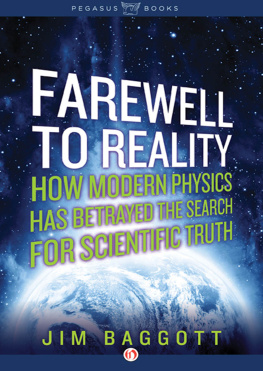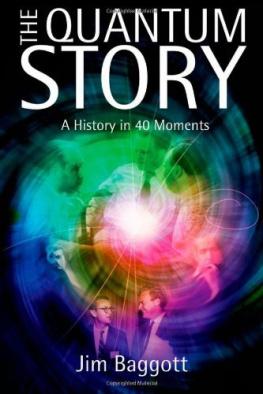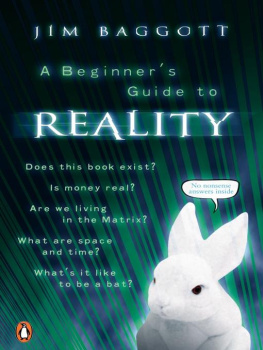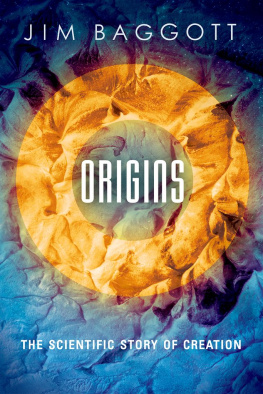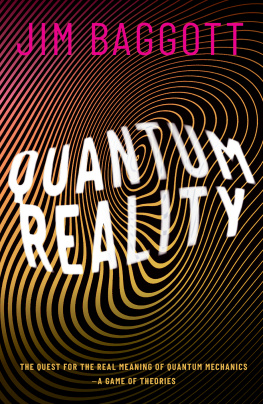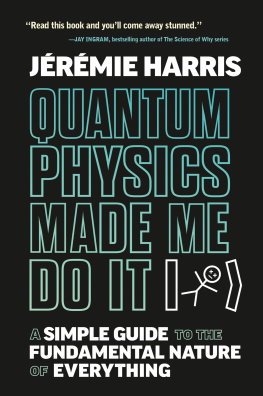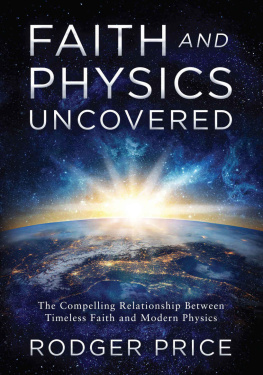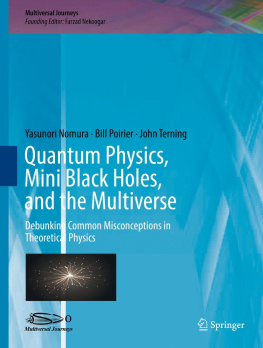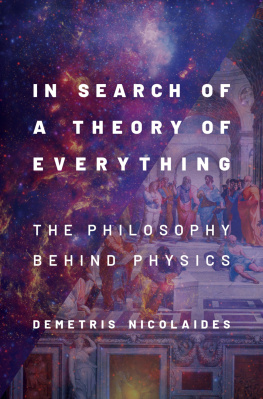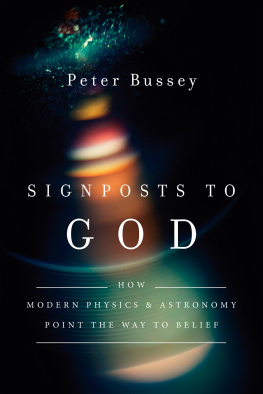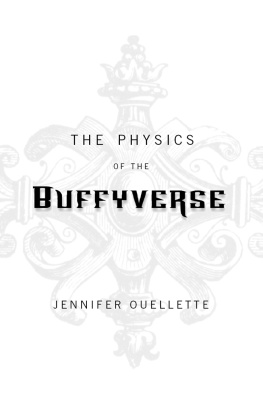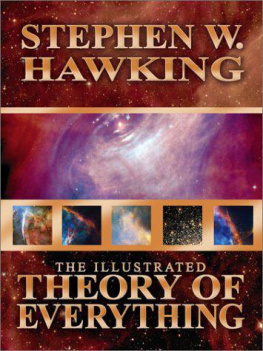Also by Jim Baggott
Higgs: The Invention and Discovery of the God Particle
The Quantum Story: A History in 40 Moments
Atomic: The First War of Physics and the Secret History of the Atom Bomb 193949
A Beginners Guide to Reality
Beyond Measure: Modern Physics, Philosophy and the Meaning of Quantum Theory
Perfect Symmetry: The Accidental Discovery of Buckminsterfullerene
The Meaning of Quantum Theory: A Guide for Students of Chemistry and Physics
Jim Baggott is an award-winning science writer. A former academic scientist, he now works as an independent business consultant, but maintains a broad interest in science, philosophy and history, and continues to write on these subjects in his spare time.
FAREWELL TO REALITY
How Modern Physics Has Betrayed the Search for Scientific Truth
JIM BAGGOTT

PEGASUS BOOKS
NEW YORK LONDON
Part I
The Authorized Version
Preface
Modern physics is heady stuff. It seems that we can barely get through a week without being assaulted by the latest astounding physics story, its headlines splashed gaudily across the covers of popular science magazines and, occasionally, newspapers. The publics appetite for these stories is seemingly insatiable, and theres no escaping them. They are the subjects of innumerable radio and television news reports and documentaries, the latter often delivered with breathless exuberance and lots of arm-waving, from unconnected but always exotic locations, against a background of overly dramatic music.
We might agree that these stories are all very interesting and entertaining. But are they true?
What evidence do we have for super-symmetric squarks, or superstrings vibrating in a multidimensional spacetime? How can we tell that we live in a multiverse? Is it really the case that the fundamental constituent at the heart of all matter and radiation is just information? How can we tell that the universe is a hologram projected from information encoded on its boundary? What are we really supposed to make of the intricate network of apparent cosmic coincidences in the laws of physics?
Now, modern science has discovered that the reality of our physical existence is bizarre in many ways, but this is bizarreness for which there is an accumulated body of accepted scientific evidence. There is as yet no observational or experimental evidence for many of the concepts of contemporary theoretical physics, such as super-symmetric particles, superstrings, the multiverse, the universe as information, the holographic principle or the anthropic cosmological principle. For some of the wilder speculations of the theorists there can by definition never be any such evidence.
This stuff is not only not true, it is not even science. I call it fairytale physics. It is arguably borderline confidence-trickery.
Matters came to a head for me personally one evening in January 2011. That evening the BBC broadcast an edition of its flagship Horizon science series, entitled What is Reality?. This began quite reasonably, with segments on the discovery of the top quark at Fermilab and some of the more puzzling conclusions of quantum theory. But beyond this opening the programme went downhill. It became a showcase for fairy-tale physics.
There was no acknowledgement that this was physics that had long ago lost its grip on anything we might regard as descriptive or explicative of the real world we experience. Horizon has an impressive reputation, and I became deeply worried that many viewers might be accepting what they were being told at face value. Conscious that I was now shouting rather pointlessly at my television, I decided that it was time to make a stand.
But, you might ask, whats the big deal? Why get so worked up? After all, consumers of popular science may simply wish to be entertained. They may wish to have their already boggled minds further boggled by the latest scientific thinking, through a rapid succession of Oh wow! revelations. Blimey! Parallel universes!
To take this view is, I believe, greatly to underestimate the people who consume popular science. It also shows an astonishing lack of respect. I suspect that many people might actually like to know what is accepted science fact and what is science fantasy. Only the hard facts can illuminate the situation sufficiently to make it possible to judge the nature of the trick, and to decide if it involves a betrayal of confidence, or even a betrayal of the truth.
Put it this way. If we were to regard fairy-tale physics as a lively branch of contemporary philosophy rather than science, do you think it would continue to receive the same level of attention from funding agencies, universities, popular science publishers, the producers of radio and television programmes and the wider public? No?
This is the big deal.
In writing this book, Ive tried to hold on to several ambitions. I wanted to describe what modern physics has to say about the nature of our physical reality, based as far as possible on the accepted body of observationally or experimentally grounded scientific fact.
But we have to accept that even in this official or authorized version of reality there are many grey areas, where we run out of hard facts and have to deal with half-truths, guesses, maybes and a little imaginative speculation. This description is the nearest we can get to reality given the current gaps in our knowledge.
I also wanted to convince you that whilst the knowledge in this authorized version goes very deep, it does seem that we have paid a high price for it. We now know much more about the physical world than we have done at any other time in history. But I believe that we comprehend and understand much less.
We were obliged to abandon Isaac Newtons clockwork universe quite some time ago, but there was an inherent comprehensibility about this description that we found familiar and maybe even comforting (unless you happened to be a philosopher). The world according to quantum theory remains distinctly unfamiliar and uncomfortable. Nobody understands quantum mechanics, declared the charismatic American physicist and Nobel laureate Richard Feynman, with some justification. And today, more than a hundred years after it was first discovered, the theory remains completely inscrutable.
Some modern theoretical physicists have sought to compensate for this loss of understanding. Others have tried to paper over the cracks in theories that are clearly not up to the task. Or they have pushed, with vaulting ambition, for a final theory of everything. These physicists have been led unwittingly or otherwise to myth creation and fairy tales.
I want to be fair to them. These physicists have been wrestling with problems for which there are as yet no observational or experimental clues to help guide them towards solutions. They are problem-rich, but data-poor. Rather than simply pleading ignorance or focusing their efforts on more tractable problems, they have chosen instead to abandon the obligation to refer their theories to our experience of the real world. They have chosen to abandon the scientific method.

